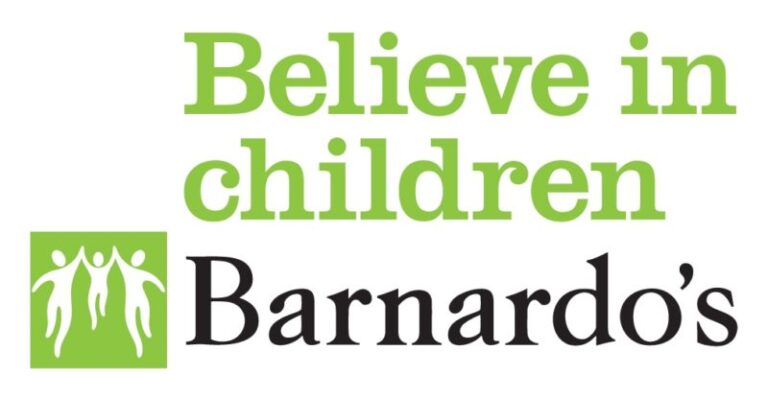It is clear that the pandemic has had, and will continue to have, an impact on children’s welfare. Community organisations and institutions such as schools, who would usually be able to monitor and safeguard children, are not having the same contact with children as before.
Barnardo’s quickly identified this and developed a national model, See, Hear, Respond, to support and safeguard these children. Amanda Naylor, See, Hear, Respond Head of Partnership, spoke at our conference the 2nd Annual Working Together to Safeguard Children & Young People Conference. She outlined the projects’ aims, delivery, reach and lessons learnt.

Aims
Amanda explained that Barnardo’s recognised “the huge amount we were asking of children; we have taken away their peer groups and support systems when many of them may be in difficult family situations, dealing with financial or other struggles” [1]. Many children have and will continue, to experience adverse impacts on their health and wellbeing.
The Children’s Commissioner’s 2019 childhood vulnerability report stated that there were around 1.6 million vulnerable children who don’t receive early help [2]. It is these children the programme aims to reach.
The objective of See, Hear, Respond is to ‘find and respond to children who are hidden from view’, to ensure that the risk of harm does not escalate within the pandemic environment [1]. The team at ‘See, Hear, Respond will contact every referral made to us, so no child gets missed. We’ll then find a partner best placed to support the most isolated and at-risk children in your area’ [3]. Amanda explained the “aim was not to duplicate early help or to add capacity, it was to de-escalate and stop those children requiring longer statutory help” [1].
While the programme aims to support any child, where there are escalated concerns with no support in place, it particularly aimed to find:
- Under 5’s – especially under 2’s
Amanda explained that there are many people parenting for the first time without the support of services they would have used, such as children’s centres, health centres, or baby groups [1].
- Young Carers
Children who are young carers will no longer have school as a respite. They may be feeling increasingly isolated and under pressure due to shielding. Alternatively, they may be confined to a space with adults who have mental health issues or substance issues, leaving them vulnerable.
- Children at risk of abuse and exploitation inside and outside of the home
.
Amanda told us that “initially it was thought that risk of abuse outside the home might decline due to pandemic restrictions, however, this was not our experience at Barnardo’s. We found that the adults and older peers that were exploiting children still knew exactly how to access those children.” [1]
- Children with special educational needs (SEN) and disabilities with risk to additional adversity/harm
Barnardo’s saw a “particularly high number of children with autism that were adversely impacted by the change of routine and lack of support. Resulting in many families on the edge of breakdown”, said Amanda [1].
- Children from Black, Asian and Minority Ethnic (BAME) communities
Amanda stressed the “need to ensure that we access BAME communities, who are often living in poverty because of systemic racism” [1]. She continues to explain the impact of the health inequalities we have started to see.
With Covid-19, disproportionately impacting BAME families leaving children with high anxiety and often suffering bereavement [1]. Amanda explained how we “also saw an increase in racism and hate crime. A media narrative developed accusing certain communities and groups of not adhering to lockdown rules, creating a warped perception” [1].
- Children needing help with emotional wellbeing and mental health
Amanda recalled that she has never seen this many children developing such an acute anxiety reaction – “those who didn’t leave their rooms because of the levels of fear” [1].
Delivery
The programme utilises a “dynamic whole voluntary sector response to work with children and young people” [1]. Establishing partnerships with voluntary organisations, the initiative has developed a strong network of national and local delivery partners.
The referral mechanism is simple and includes options for self-referrals from children, parents or any other professionals, there are no eligibility criteria, “you just need to say you are adversely impacted by the current situation and we commit to get support.
The only exclusion is those children who are already part of multi-agency plans, who are receiving significant help already” [1]. Delivery is concentrated around providing “interim support quickly, such as therapeutic approaches, coping strategies, support networks, addressing digital poverty and gaining access to other forms support” [1].
The delivery model is broken down into 3 key sections to give as much flexibility as possible:
- Online digital support, which is jointly delivered by a network of partners. This utilises telephone help lines, online counselling and interactive content with a wide range of advice and signposting information [1].
- Youth Interventions, which provide face to face support for those children “identified at most risk of harm and for whom digital approaches are unsuccessful or inappropriate” [1]. This is delivered through socially distanced walks, one to one crisis support and detached support for children who may be at risk of harm outside the home.
- Reintegration into Education, Amanda explained that as lockdown went on it was evident they needed to work “alongside schools and statutory partners to identify those children that would benefit from additional contact or a reintegration plan” [1]. These plans reduce the barriers to children accessing education.
Reach
The programme has been successful and reached a diverse range of children. Here are the programme headlines from the first 5 months [1]:
- 83 Partners – 30 Black, Asian and minority ethic community groups
- 202,939 visits to the digital support hub
- 25,932 children and families supported
- 3000 (roughly) children referred into the programme every week, there is no sign of this slowing down
- 16,253 Advice and Support Interventions
- 17,121 Children worked with in detached settings
- 4,220 Therapeutic support work sessions
- 2,251 Children or parents worked with in group work sessions
- 2,397 Children supported back into school
- 1,618 Crisis face to face support sessions
Amanda talked us through the data showing the reach of See Hear Respond:
- Children with SEND at risk of exploitation and BAME children are both overrepresented in the numbers of children who have barriers to accessing services and in reintegration into education
- Families with children under 5 are overrepresented in requiring parental support, issues with parental mental health, and feeling socially isolated
- Young carers are overrepresented in poor mental health, social isolation, and loneliness. There has been a big increase in older children being expected to look after younger siblings
- Children with mental health issues often have multiple needs that span the entire triage list. Including online harm, extra familial harm, parental issues and barriers to services and education.
Lessons Learnt
- The importance of having no eligibility criteria. Having no eligibility criteria has been really beneficial for finding hidden need/harm [1]. It is important that we take away the lesson of having a wide front door – open, friendly, and inclusive. Amanda explained, “early help in some Local Authorities has thresholds that many children can’t meet, the support we have offered has identified the importance of national investment in early help to help children through this recovery period” [1]
- The importance of having people on the street. After just 5 months, Barnardo’s recorded that See, Hear, Respond had worked with 17,121 Children in detached settings. Amanda told us “these children would have been missed if we didn’t have people on the streets visiting children in their places and spaces” [1]
- The value of rapid and holistic approach. Feedback has shown that children and families have valued a rapid and holistic approach [1]. This has been achieved through See, Hear, Respond’s commitment to deliver support within 5 days. Outcomes can be achieved through many different delivery mechanisms (Surf therapy, WhatsApp groups, family support, performing arts) [1]
- The benefits of both small and large organisations working together. Smaller organisations benefited from the backing of Barnardo’s. While Barnardo’s benefited from the agility and flexibility of smaller organisations. Amanda maintained that if you “don’t bring community-based organisations in you miss children from those communities. I could not lead the See, Hear, Respond programme without them” [1]. Amanda also highlights the benefits of data sharing and developing a single dashboard.
Children will continue to need support and safeguarding from the impact of the pandemic and more widely. This programme has provided us with a model that successfully fuses national and local safeguarding.
To learn more about the resources available you can access the See, Hear, Respond Support Hub here. Alternatively, if you are a professional, child or young person, or a parent or carer you can use the page to get extra support.
Sources:
[1] Naylor, A. 2020. The 2nd Annual Working Together to Safeguard Children & Young People Conference.
[2] Children’s Comissioner. 2019. Childhood vulnerability in England 2019.
[3] Barnados.org. See, Hear, Respond.
Register FREE to access 2 more articles
We hope you’ve enjoyed your first article on GE Insights. To access 2 more articles for free, register now to join the Government Events community.
(Use discount code CPWR50)



